
Practical Management Science
6th Edition
ISBN: 9781337406659
Author: WINSTON, Wayne L.
Publisher: Cengage,
expand_more
expand_more
format_list_bulleted
Question
The purpose of this assignment is to know how to apply
- Compute the projected profit for the order quantities suggested by the management team under three scenarios: worst case in which sales = 10,000 units, most likely case in which sales = 20,000 units, and best case in which sales = 30,000 units.
- The order quantity should have a 70% chance of meeting demand and only a 30% chance of stock-outs. What quantity would be ordered under this policy, and what is the projected profit under the three sales scenarios?
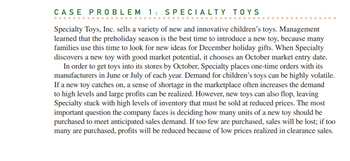
Transcribed Image Text:CASE PROBLEM 1: SPECIALTY TOYS
Specialty Toys, Inc. sells a variety of new and innovative children's toys. Management
learned that the preholiday season is the best time to introduce a new toy, because many
families use this time to look for new ideas for December holiday gifts. When Specialty
discovers a new toy with good market potential, it chooses an October market entry date.
In order to get toys into its stores by October, Specialty places one-time orders with its
manufacturers in June or July of each year. Demand for children's toys can be highly volatile.
If a new toy catches on, a sense of shortage in the marketplace often increases the demand
to high levels and large profits can be realized. However, new toys can also flop, leaving
Specialty stuck with high levels of inventory that must be sold at reduced prices. The most
important question the company faces is deciding how many units of a new toy should be
purchased to meet anticipated sales demand. If too few are purchased, sales will be lost; if too
many are purchased, profits will be reduced because of low prices realized in clearance sales.
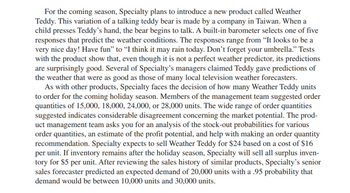
Transcribed Image Text:For the coming season, Specialty plans to introduce a new product called Weather
Teddy. This variation of a talking teddy bear is made by a company in Taiwan. When a
child presses Teddy's hand, the bear begins to talk. A built-in barometer selects one of five
responses that predict the weather conditions. The responses range from "It looks to be a
very nice day! Have fun" to "I think it may rain today. Don't forget your umbrella." Tests
with the product show that, even though it is not a perfect weather predictor, its predictions
are surprisingly good. Several of Specialty's managers claimed Teddy gave predictions of
the weather that were as good as those of many local television weather forecasters.
As with other products, Specialty faces the decision of how many Weather Teddy units
to order for the coming holiday season. Members of the management team suggested order
quantities of 15,000, 18,000, 24,000, or 28,000 units. The wide range of order quantities
suggested indicates considerable disagreement concerning the market potential. The prod-
uct management team asks you for an analysis of the stock-out probabilities for various
order quantities, an estimate of the profit potential, and help with making an order quantity
recommendation. Specialty expects to sell Weather Teddy for $24 based on a cost of $16
per unit. If inventory remains after the holiday season, Specialty will sell all surplus inven-
tory for $5 per unit. After reviewing the sales history of similar products, Specialty's senior
sales forecaster predicted an expected demand of 20,000 units with a .95 probability that
demand would be between 10,000 units and 30,000 units.
Expert Solution
This question has been solved!
Explore an expertly crafted, step-by-step solution for a thorough understanding of key concepts.
This is a popular solution
Trending nowThis is a popular solution!
Step by stepSolved in 3 steps with 4 images

Knowledge Booster
Similar questions
- Watch Entice sells high end watches. The annual demand for the company’s product is 57,000 units.Ordering costs are $500 per order and carrying costs are $90 per unit, including $40 in the opportunitycost of holding inventory. It currently takes 2 weeks to supply an order to the store. The following tableshows the probability distribution of various demand levels during the 2-week purchase-order lead time:Total Demand Probability of Demand800 0.05900 0.21,000 0.51,100 0.21,200 0.05 Watch Entice does not hold any safety stock. If the company runs of stock, it has to rush order thecomputers at an additional cost of $10 per computer. What is the stock out cost?A. $21,600B. $14,400C. $7,200D. $17,400arrow_forwardDaniel Grady is the financial advisor for a number of professional athletes. An analysis of the long-term goals for many of these athletes has resulted in a recommendation to purchase stocks with some of their income that is set aside for investments. Five stocks have been identified as having very favorable expectations for future performance. Although the expected return is important in these investments, the risk, as measured by the beta of the stock, is also important. (A high value of beta indicates that the stock has a relatively high risk.) The expected return and the betas for five stocks are as follows: Stock 1 2 3 4 5 Expected Return (%) 11.0 9.0 6.5 15.0 13.0 Beta 1.20 0.85 0.55 1.40 1.25 Daniel would like to minimize the beta of the stock portfolio (calculated using a weighted average of the amounts put into the different stocks) while maintaining an expected return of at least 11%. Since future conditions may change, Daniel…arrow_forwardA jewelry manufacturer is creating a routine order schedule for some new products: J66 and J67. J66 can be ordered any time. J67 is set up to be ordered every 4 weeks. The company is closed 2 weeks out of a 52 week year otherwise it is open. Given the following, show me the calculation (I have provided the final answer) the questions at the end: J66 acceptable stockout risk = 2.5%, lead time = 2 weeks, ordering cost =$70, annual holding cost = 30%, unit cost =$15, standard deviation = 4 units per week, and average weekly demand is 60 units. J67 acceptable stockout risk = 2.5%, lead time = 2 weeks, ordering cost =$30, annual holding cost = 30%, unit cost =$20, standard deviation = 5 units per week, and average weekly demand is 70 units. I know the reorder point for j67 is 153 units on hand. 1) Show me the math to come up with the 153 units answer. 2) What is the reorder point for the J66? (I know the answer is 306 units so show me the calculation), 3) If the J67 has 110 units on…arrow_forward
- Deborah Kellogg buys Breathalyzer test sets for the Winter Park Police Department. The quality of the test sets from her two suppliers is indicated in the following table: For example, the probability of getting a batch of tests that are 1% defective from Winter Park Technology is .70. Because Kellogg orders 10,000 tests per order, this would mean that there is a .70 probability of getting 100 defective tests out of the 10,000 tests if Winter Park Technology is used to fill the order. A defective Breathalyzer test set can be repaired for $0.50. Although the quality of the test sets of the second supplier, Dayton Enterprises, is lower, it will sell an order of 10,000 test sets for $37 less than Winter Park. a) Develop a Decision Treeb) Which supplier should Kellog use? Percent Defective Probability for Winter Park Technology Probability for Dayton Enterprises 1 0.70 0.30 3 0.20 0.30 5 0.10 0.40arrow_forwarddu/courses/423127/quizzes/3325 take/questions/60963079 Table on the right shows the net cashflow (NCF) and cumulative cashflow for two projects X and Y. Answer the following questions. 1- Based on Descarte's rule of signs, what is the max. number of real ROR (i*) for project X? (put numerical number) 2- Looking at cumulative CF of project X, can we tell that it has only one positive i* value? (put "yes" Project X Project Y Year NCF Cumulative CE NCF Cumulative CF or "no") 180 -100 20,000 20,000 1 50 -130 16,000 36,000 3- Based on Descarte's rule of signs, what is the 36,000 2 50 80 50 30 25,000 25,000 max. number of real ROR (i*) for project Y? (put 4 50 20 30,000 5,000 numerical number) 4- Looking at cumulative CF of project Y, can we tell that it has only one positive i* value? (put "yes" or "no")arrow_forwardLifang Wu owns an automated machine shop that makes precision auto parts. He has just compiled an input-output report for the grinding work center. Period 1 3 4 Total Planned input 70 70 85 85 Actual input 75 75 75 75 Deviation Planned output Actual output 75 75 75 75 85 85 80 80 Deviation Initial backlog: 20 For the given information related to "inputs," the values for deviation and total are: The deviation in period 2 = units (enter your response as an integer, including a minus sign if necessary). The deviation in period 4 = units (enter your response as an integer, including a minus sign if necessary). The total for "planned inputs" = units (enter your response as an integer, including a minus sign if necessary). The total for "actual inputs" = units (enter your response as an integer, including a minus sign if necessary). The total deviation for "inputs" = units (enter your response as an integer, including a minus sign if necessary). "3D For the given information related to…arrow_forward
arrow_back_ios
arrow_forward_ios
Recommended textbooks for you
 Practical Management ScienceOperations ManagementISBN:9781337406659Author:WINSTON, Wayne L.Publisher:Cengage,
Practical Management ScienceOperations ManagementISBN:9781337406659Author:WINSTON, Wayne L.Publisher:Cengage,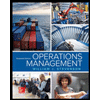 Operations ManagementOperations ManagementISBN:9781259667473Author:William J StevensonPublisher:McGraw-Hill Education
Operations ManagementOperations ManagementISBN:9781259667473Author:William J StevensonPublisher:McGraw-Hill Education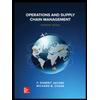 Operations and Supply Chain Management (Mcgraw-hi...Operations ManagementISBN:9781259666100Author:F. Robert Jacobs, Richard B ChasePublisher:McGraw-Hill Education
Operations and Supply Chain Management (Mcgraw-hi...Operations ManagementISBN:9781259666100Author:F. Robert Jacobs, Richard B ChasePublisher:McGraw-Hill Education
 Purchasing and Supply Chain ManagementOperations ManagementISBN:9781285869681Author:Robert M. Monczka, Robert B. Handfield, Larry C. Giunipero, James L. PattersonPublisher:Cengage Learning
Purchasing and Supply Chain ManagementOperations ManagementISBN:9781285869681Author:Robert M. Monczka, Robert B. Handfield, Larry C. Giunipero, James L. PattersonPublisher:Cengage Learning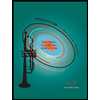 Production and Operations Analysis, Seventh Editi...Operations ManagementISBN:9781478623069Author:Steven Nahmias, Tava Lennon OlsenPublisher:Waveland Press, Inc.
Production and Operations Analysis, Seventh Editi...Operations ManagementISBN:9781478623069Author:Steven Nahmias, Tava Lennon OlsenPublisher:Waveland Press, Inc.

Practical Management Science
Operations Management
ISBN:9781337406659
Author:WINSTON, Wayne L.
Publisher:Cengage,

Operations Management
Operations Management
ISBN:9781259667473
Author:William J Stevenson
Publisher:McGraw-Hill Education

Operations and Supply Chain Management (Mcgraw-hi...
Operations Management
ISBN:9781259666100
Author:F. Robert Jacobs, Richard B Chase
Publisher:McGraw-Hill Education


Purchasing and Supply Chain Management
Operations Management
ISBN:9781285869681
Author:Robert M. Monczka, Robert B. Handfield, Larry C. Giunipero, James L. Patterson
Publisher:Cengage Learning

Production and Operations Analysis, Seventh Editi...
Operations Management
ISBN:9781478623069
Author:Steven Nahmias, Tava Lennon Olsen
Publisher:Waveland Press, Inc.